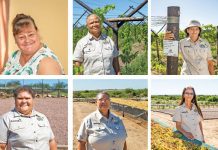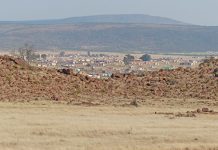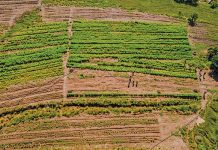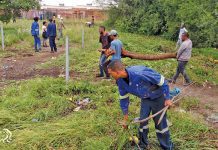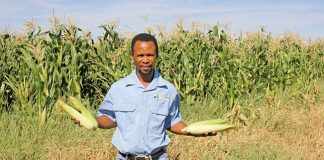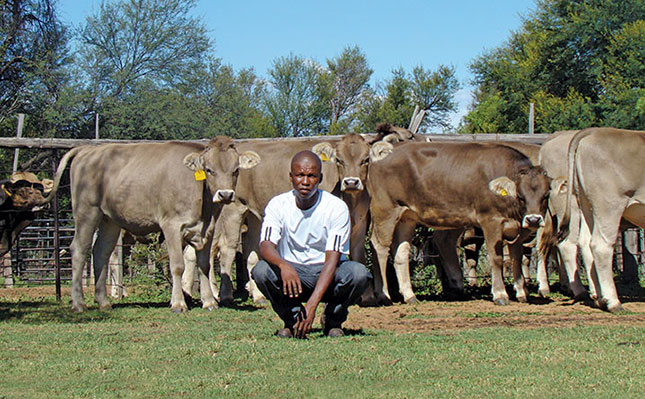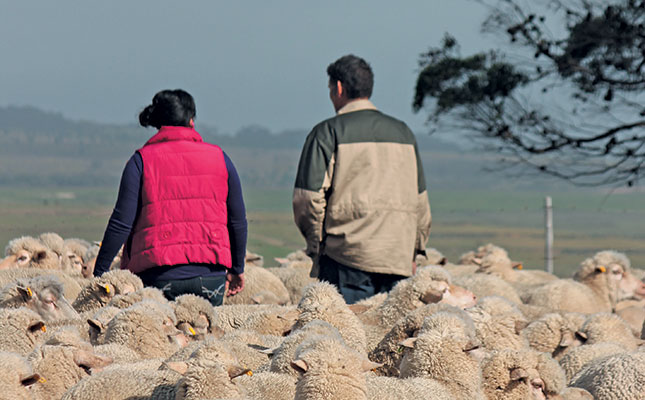
The challenges posed by land reform in South Africa are complex and could potentially pose a threat to food security and political stability in the country if solutions benefiting all South Africans cannot be found.
The restitution of land to those claimants who lost access to land due to the 1913 Natives Land Act already require more resources than the National Treasury has proven willing or able to allocate.
The annual allocation provided to the Commission on Restitution and Land Rights for the three financial years from 2015 to 2018 amounts to about R3,5 billion per year on average.
Compare this with the R179 billion that would be needed to cover just the cost of anticipated new claims, and it becomes clear that the fiscus will struggle to provide the funds needed to make any meaningful progress with land reform within the next two decades.
On the other hand, pressure on government and the agricultural sector is mounting to transform the sector by providing access to land and agricultural value chains to new black farmers and farmworkers.
Land reform scenarios
Where does this leave the rural poor, many of whom depend on access to land to earn a livelihood? And what are the implications for reform and transformation in the farming sector?
At the 2016 Agri SA annual congress held in Pretoria recently, a group of panellists led by Brian Whittaker, retired CEO of Vumela Development Fund, took part in a discussion about the future of land reform in South Africa.
The discussion was guided by the four future scenarios for land reform developed by the Land Reform Futures think-tank, an initiative spearheaded by Vumelana Development Fund.
The scenarios team consisted of 40 people who approach land reform from widely differing perspectives.
The four scenarios were titled: Connection and Capture; Market Power and Concentration; Occupation and Confiscation; and Hard Bargaining and Compromise.
Connection & capture
The report summarises this first scenario as a situation in which land reform is captured “by politically connected interest groups who benefit at the expense of ordinary people”.
“The story unfolds in the context of harsh economic conditions, rising power of traditional leaders, weak communal property associations and other institutions, and growing political pressure on the ruling party,” the report states.
The outcome of this scenario is ultimately that land is used for the benefit of the few.
The report further explains that this scenario would result in a sense that the powerful are entitled to exploit the system for their own benefit.
“The winners are those who hold power and broker deals. The losers are ordinary people outside the networks of patronage. There is very little tenure security for rural households and women remain particularly disadvantaged,” the report states. As the economic situation in rural areas decline urbanisation accelerates.
Market Power & Concentration
In the second scenario, land reform changes the racial profile of concentrated commercial farming without broadening ownership for small farmers and local communities.
The result of this is that the land ownership pattern in agriculture has changed and the sector has been transformed so that black commercial farmers own about half of agricultural land in South Africa, but the structure of agriculture remains unchanged.
The number of commercial farms has reduced to 20 000 (from about 37 000 in 2016) and small farmers still struggle to get a foothold with limited support from government. Communal areas remain neglected by state support.
Under this scenario “over 70% of the population lives in or near cities, while household food security remains a problem for the poor. A young generation is growing up hungry, landless and marginalised on urban fringes and in rural areas, so the threat of conflict remains”, the report states.
Occupation & confiscation
This scenario envisions a future of “deepening hardship and hunger” that eventually drives a countrywide campaign of illegal occupation and invasion, leading to confiscation without compensation, made possible by a change in the Constitution.
According to the report, this scenario would see agricultural infrastructure collapsing and agricultural production plummeting, resulting in an increased reliance on imported food.
“A new government comprising former opposition groups with competing views on land and agriculture is in power,” says the report. As a result of the uncertain future that South Africa faces investment has dried up and a rising number of farm occupiers and many of the urban poor go hungry.
Hard bargaining & compromise
The final scenario envisions a collaborative approach to land reform with a pro-poor orientation.
“Multiple forms of ownership, tenure, land use and scale of operations emerge. Smallholder farmers and the previously excluded rural poor are the winners, and the losers are those who use the land as a source of patronage and privilege,” the report states.
This scenario would, however, require “hard talk and compromises by government, small-scale farmers, land reform beneficiaries, civil society organisations and financing partners” to open the way for a collaborative approach.
Preparing the ground
The panel at the Agri SA congress focused mostly on the fourth scenario, Hard Bargaining and Compromise. One of the panellists, Ernest Pringle, chairperson of Agri SA’s Agriculture Development Policy Committee, said that before it could be realised, problems in the current system had to be solved.
“There’s still too much corruption and nepotism in the beneficiary selection process, as a result of which land is often not given to those who have some experience in farming,” he said.
According to Pringle, land reform beneficiaries needed to receive proper training. However, due to poor support from government, many agricultural colleges had become dysfunctional. Government needed to make sufficient financing available for land reform.
“For all the talk we have about land reform in South Africa, very little money is made available. We can’t expect the process to continue, without any real funding,” he said.
In those land transactions where government acquired land on behalf of black farmers, it was crucially important that title deeds be transferred to the beneficiaries, said panellist Preline Swart, vice- chairperson of Grain SA.
“I believe we should provide new black farmers with a full support package because any black farmers who have managed to start farming on any scale have already risen out of a challenging situation.”
She said that new farmers should be given financial support for the first three to five years of operation, after which they should be able to fund themselves.
Masiphula Mbongwa, ministerial advisor at the Department of Rural Development and Land Reform, proposed a fifth scenario that entailed greater cooperation.
He said that it took a lot from the fourth scenario, but questioned the need for “hard bargaining”.
This, he feared, could derail successful implementation of the fourth scenario. He suggested that if there was sufficient buy-in from all role players, less “hard bargaining” would be required to achieve successful transformation of the sector.
“Nobody opposes the need for land reform and restitution. The problem, though, is that we tend to take polar opposite positions about how it should be carried out. But instead of saying ‘I’m here and you’re there’, farmers should recognise that they are all in the same boat,” he said.
If successful, land reform could take place without “hard bargaining”, clear rules must be defined for the bargaining process, he said.
“The first is trust. We have to learn to trust each other and function as a family – a family may disagree on some things, but even when they do, they remain part of the family.”
Another rule, said Mbongwa, was to “never leave the land that we are arguing about fallow”.
To read the full Land Reform Futures Scenarios, visit the website landreformfutures.org. Email
[email protected].


